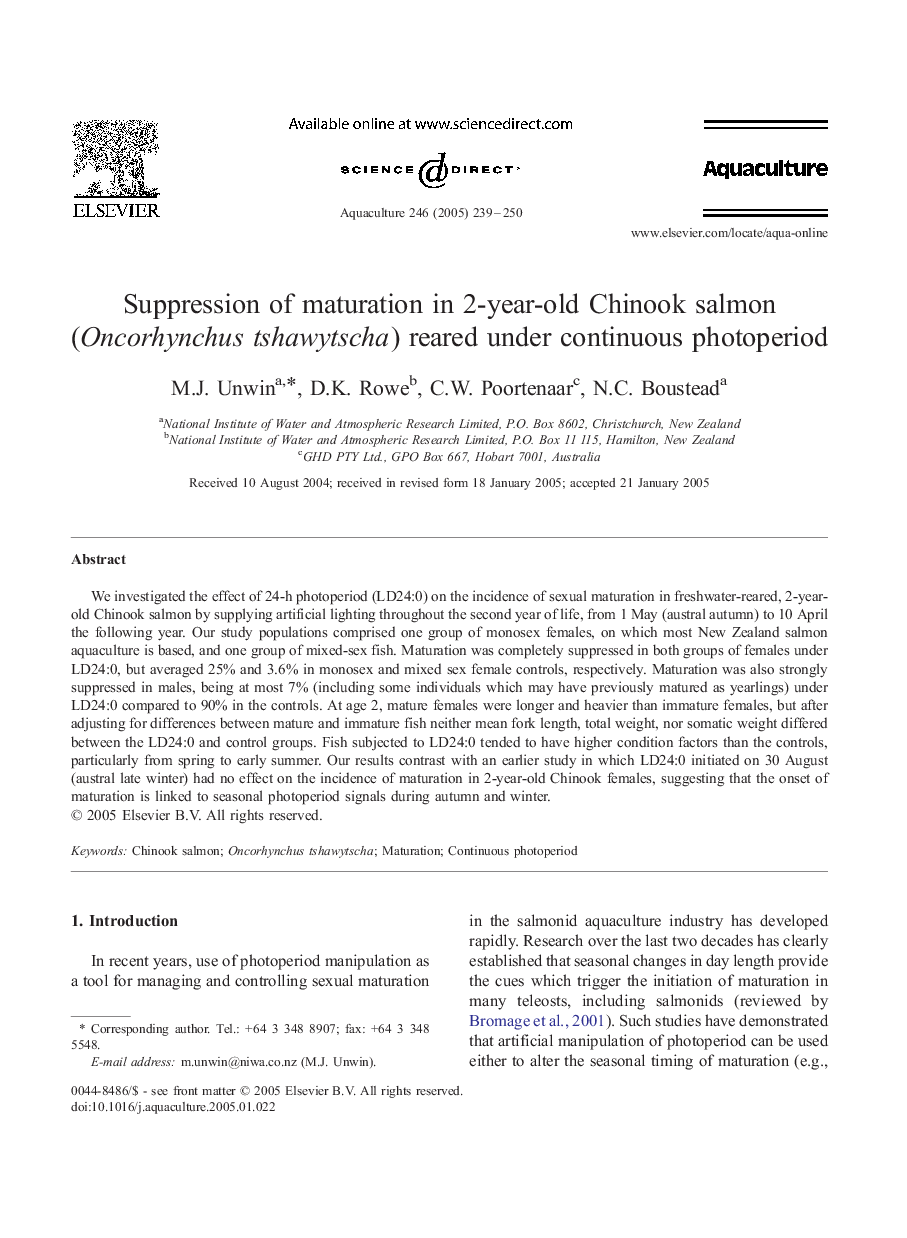| Article ID | Journal | Published Year | Pages | File Type |
|---|---|---|---|---|
| 8974743 | Aquaculture | 2005 | 12 Pages |
Abstract
We investigated the effect of 24-h photoperiod (LD24:0) on the incidence of sexual maturation in freshwater-reared, 2-year-old Chinook salmon by supplying artificial lighting throughout the second year of life, from 1 May (austral autumn) to 10 April the following year. Our study populations comprised one group of monosex females, on which most New Zealand salmon aquaculture is based, and one group of mixed-sex fish. Maturation was completely suppressed in both groups of females under LD24:0, but averaged 25% and 3.6% in monosex and mixed sex female controls, respectively. Maturation was also strongly suppressed in males, being at most 7% (including some individuals which may have previously matured as yearlings) under LD24:0 compared to 90% in the controls. At age 2, mature females were longer and heavier than immature females, but after adjusting for differences between mature and immature fish neither mean fork length, total weight, nor somatic weight differed between the LD24:0 and control groups. Fish subjected to LD24:0 tended to have higher condition factors than the controls, particularly from spring to early summer. Our results contrast with an earlier study in which LD24:0 initiated on 30 August (austral late winter) had no effect on the incidence of maturation in 2-year-old Chinook females, suggesting that the onset of maturation is linked to seasonal photoperiod signals during autumn and winter.
Related Topics
Life Sciences
Agricultural and Biological Sciences
Aquatic Science
Authors
M.J. Unwin, D.K. Rowe, C.W. Poortenaar, N.C. Boustead,
